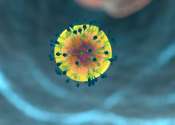Single blood test predicts 30-year cardiovascular disease risks for women
Research supported by the National Institutes of Health has found that measuring two types of fat in the bloodstream along with C-reactive protein (CRP), a marker of inflammation, can predict a woman's risk for cardiovascular ...
16 hours ago
0
70









